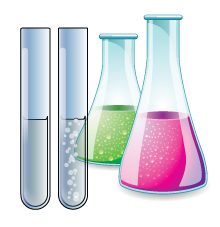 Regenerative Medicine refers to the process of replacing or regenerating human cells, tissues or organs with the purpose of restoring or establish normal function.
Regenerative Medicine refers to the process of replacing or regenerating human cells, tissues or organs with the purpose of restoring or establish normal function.
Among the modalities either being used, or in development are:
The Use of Growth Factors and Cytokines (any of a number of substances, that are secreted by certain cells of the immune system and have an effect on other cells), to stimulate cellular migration and healing of damaged tissue. This is the process whereby the body repairs cuts and wounds. Naturally occurring growth factors attached to platelets, stimulate the migration into damaged tissue of skin cells and vascular cells that repair wounds. This natural process has been adapted in Cosmetic Medicine to repair scars, fill in lines, wrinkles, hollows under the eyes, and in combination with adipose cells or mesenchymal stem cells, to create a volumizing facelift (see: Selphyl)
Stem Cells are pluripotent germ cells that can develop within any tissue in the body. The most primitive stem cells are derived from embryonic tissue (umbilical cord blood and Wharton’s Jelly) and can be extracted and banked at birth for future use. These cells are multipotent (can theoretically regenerate many types of human tissue). Adult humans have a more differentiated type of mesenchymal stem cell which can be harvested from adipose tissue. Because of their ability to differentiate into other types of cells (osteoblasts, adipocytes, chondrocytes, myocytes and neuron-like cells), researchers are currently focusing on potential applications of mesenchymal stem cells for repair of joints, tendons, and muscle (arthritic knees and damaged heart muscle) and also for regenerating neurons after brain injury or stroke and in degenerative neurological disorders. Another use is a potential treatment for insulin-dependent diabetes. In Cosmetic Medicine, in some centres, stem cells are being used in conjunction with fat transplants for repairing scars and in volumizing facelifts. (see Vampire Facelift)
Tissue Engineering refers to the extraction of cells from the patients and their growth in vitro for the purpose of transplanting back into that same patient’s body as functional tissue of the organs. Researchers in different parts of the world have succeeded in growing entire organs such as a bladder or trachea (windpipe) and successfully transplanting them back into patients and are now working on a variety of other organs.
Gene Therapy
Genes, which are fragments of DNA carried on chromosomes, encode instructions on how to make proteins, which in turn have important physiological functions. Defective genes can lead to various hereditary or degenerative diseases. Gene therapy is a technique for correcting defective genes responsible for disease development. In gene therapy, a ‘normal’ gene is inserted into the genome to replace an ‘abnormal’, disease-causing gene. This is accomplished by introducing therapeutic DNA into patients cells attached to a viral vector, a liposome or a nanoparticle.
Progeria is a rare genetic condition that causes rapidly accelerated aging and leads to an average life expectancy of 13 years. It is associated with the production of abnormal lamin A, a protein which is associated with proper positioning of DNA. within the nucleus of the cell. Errors in the production of lamin-A may take place even in people with “normal” copies of the gene. Researchers suspect that accumulation of this abnormal protein may contribute to aging.
Normal Aging is probably associated with multiple genes, and the expression of these genes can be influenced by many factors. Observation of identical twins surviving to over 100 years of age revealed marked differences in their phenotypes (gene expression), despite their having identical DNA; spurring research to discover what factors are important in modulating the influence of genes (Epigenetics). We already know that certain substances contained in foods are important in the switching on or off certain genes – hence a branch of this science is known as Nutrigenomics. (see: Nutritional & Metabolic Medicine)
